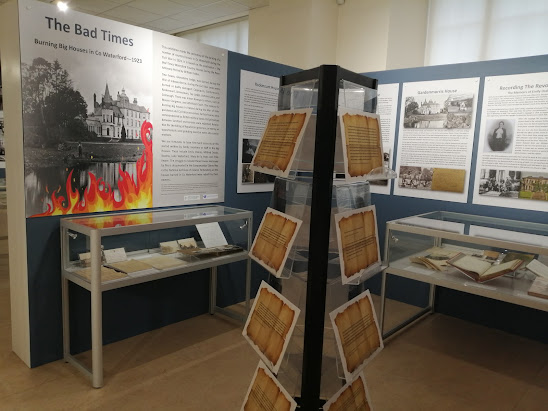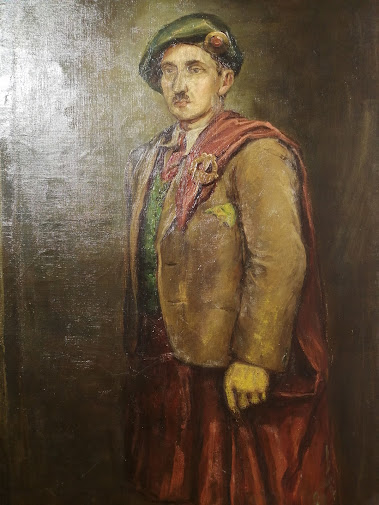Clonmel
Chronicle 6 December 1876
Provident
Organisations at Comeragh
During
the week there might have been witnessed on the property of John Palliser,
Esq., D. C., a scene which is the best illustration of that ‘Charity that
vaunteth not itself’, and one, too, that has been enacted year after year for
the last quarter of a century, so quietly and obtrusively that few beyond the
recipients of the bounty have heard of
its existence; nor would greater prominence be given to it now, but with a hope
that others possessing the ‘rights’ of property…may be led to exercise these in
the same spirit of generous impulse towards their dependents.
For
a great many years there has been a ‘Comeragh Clothing Club’ for poor
housekeepers of the labouring class, widows, and others whose position renders
them eligible members; who, as an incentive to provident habits, are required
to contribute a fixed sum monthly, and at this season they receive double the
amount in value – blankets, clothes, etc., for themselves or their children,
the other moiety being contributed by the landlord. There are, besides these,
the regular ‘pensioners’…who receive a monthly allowance of money. The numbers
receiving aid from both sources exceed 100. The management of the club, and the
dispensing of the gratuitous relief, have usually been entrusted to the agent’s
lady, and the duties have, for a number of years been performed by Mrs Langley,
Tay Lodge.
There
is to be found here another association, which has conferred no small advantage
on those who have availed themselves of its benefits. This is the ‘Cattle
Insurance Club’, which was started some years ago, when the foot-and-mouth
disease created such serious apprehensions as to call for the most energetic
action…It is open to any tenant on the estate to insure his stock at a sum of a
few pounds below their real value at a poundage which is every year regulated
by varying circumstances…The conception and organisation of this valuable
society are due to the late Thomas Hunt, Esq, and bear the impress of his
comprehensive mind and business habits…
Captain
John Palliser, Comeragh House, entertained during the past week, a
distinguished party, including his Grace the Duke of St Albans, Sir George and
Lady Leith, the Hon Miss Gough, Mr & Mrs Chichester, Castletown, and other
friends…the gentlemen enjoyed good sport in the neighbouring preserves.
 |
| Rear of Comeragh House , Circa 1900 |














%20Circa%201790.jpg)
















